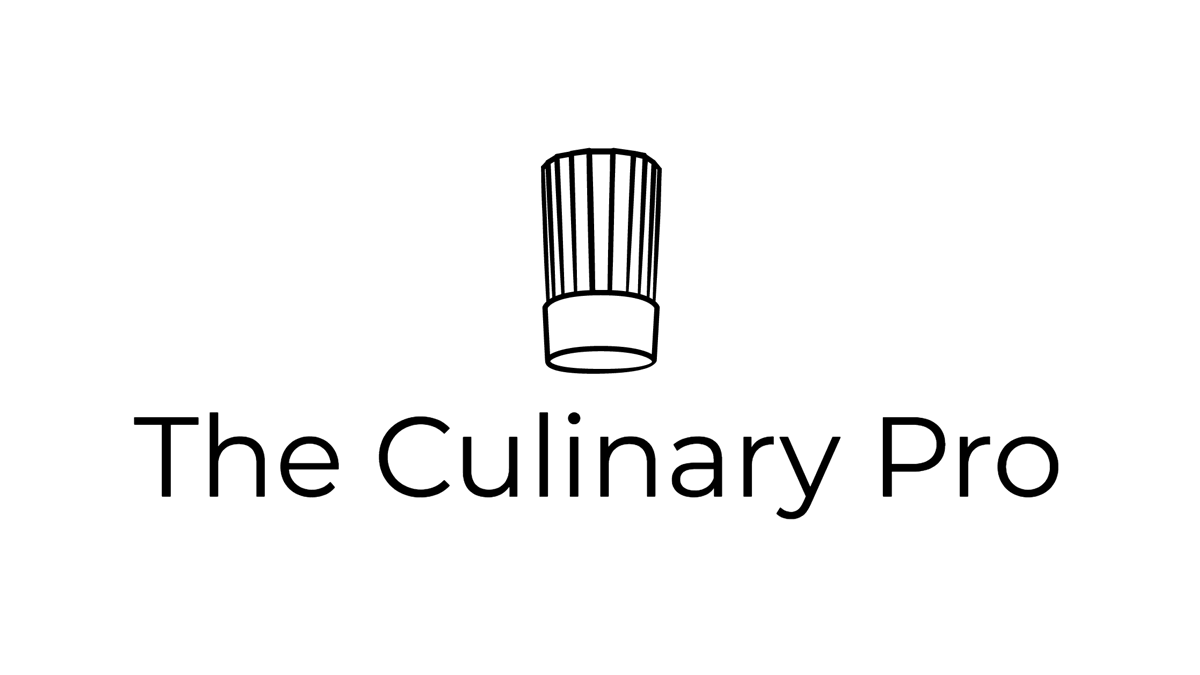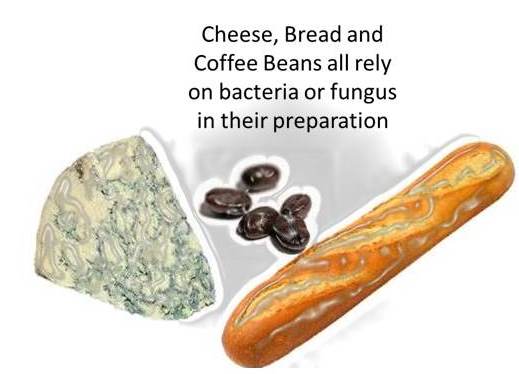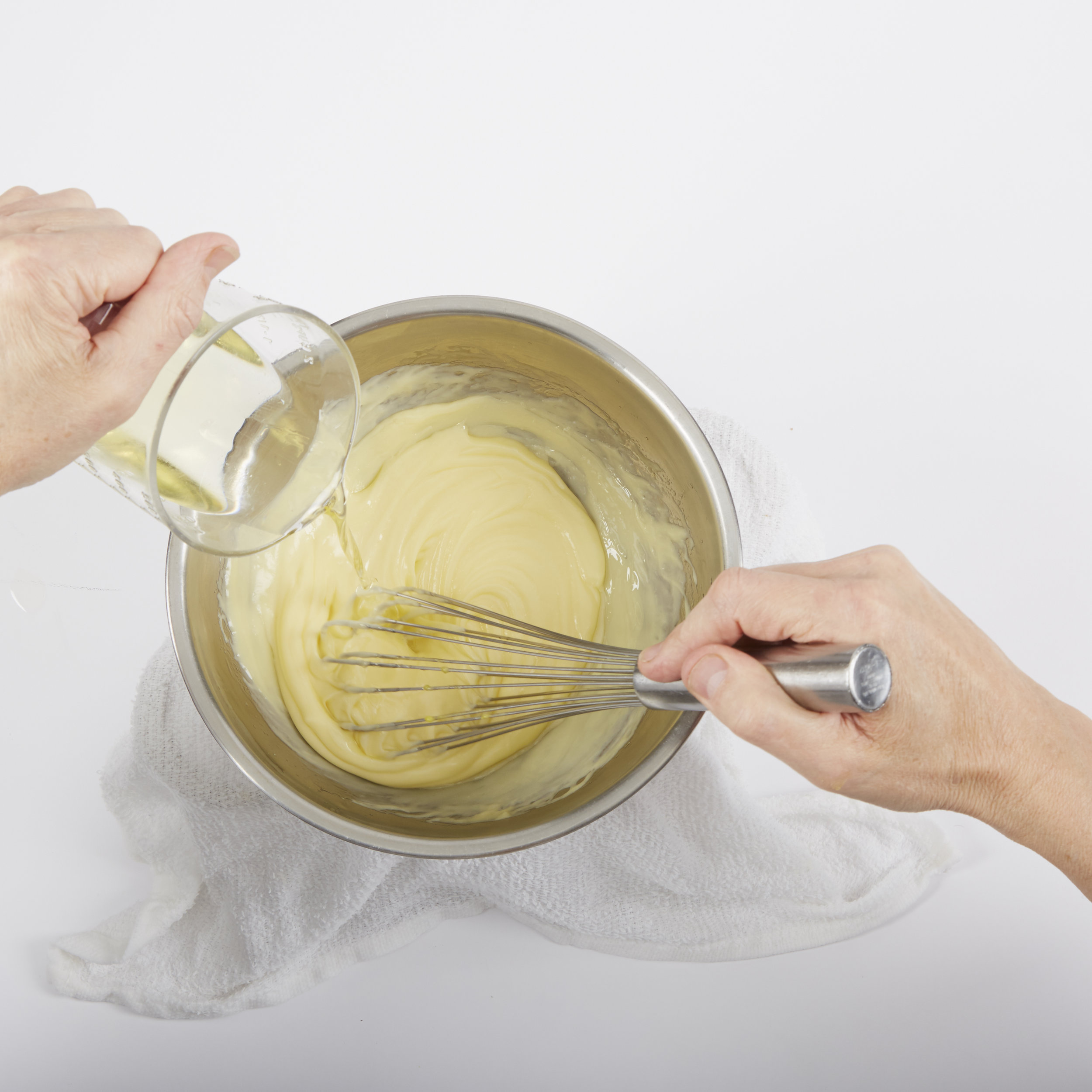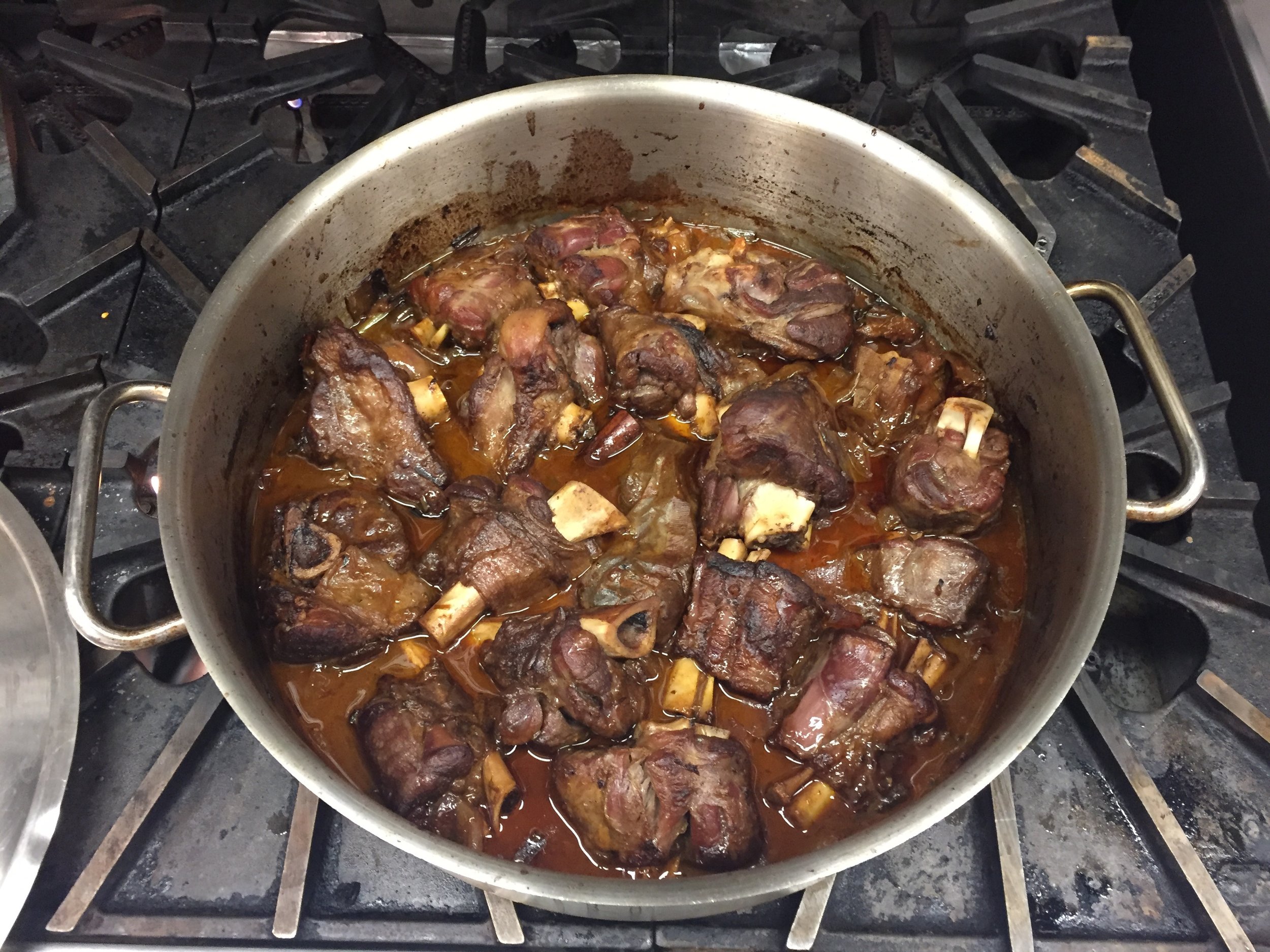Culinary Science
Science is an important and constant element in the culinary process. Foods are scaled proportionately, and combined in a certain order, to achieve desired outcomes. Chemical reactions occur in cooking through manipulation or emulsification. The control of heat and cold maximizes food quality and safety. Understanding what happens in the cooking process, and using a disciplined approach in applying principles of culinary science, will lead to consistent and predictable results.
Food and Energy - How Cold and Hot Temperatures Affect Food
Cold
Cold temperatures are used to thicken and firm textures in prepared foods. Gels that are liquid at room temperature become solid when cooled. Sauces when frozen become ice creams and sorbets. Savory emulsions of meats, poultry, and fish require cold temperatures to create forcemeats for sausages and pâtés. Cold temperatures also keep harmful pathogens from multiplying and aid in food preservation.
Meat Properly Wrapped for Freezing
Chilling or freezing foods is a reversible process while heating is not. Freezing slows down the deterioration of foods, extending their shelf life for 6 months or more. Freezing, however, can damage foods if they are not wrapped properly, left too long in storage, or improperly frozen. Water expands when cooled, and creates ice crystals when frozen. These ice crystals rupture the fibers in meats and vegetables. When foods are thawed moisture is released, a term referred to as “purge”. Repeated freezing and thawing change the quality of foods; textures become soft and mushy, and moisture loss creates a drying effect. Flavor, color, and nutrients suffer too.
The quality of foods when frozen is also affected by the length of time that the product takes to reach the freezing point. A slow freeze produces larger ice crystals, which are not desirable in ice cream production, and also create more damage to the fibers of meats and vegetables. Rapid freezing produces the smallest ice crystals and the least damage to foods; ice creams are smoother, and meats, fish, and poultry maintain their integrity. Foods that are frozen must always be wrapped properly because extremely cold temperatures lack humidity and cause “freezer burn”, or surface dehydration, that harms the product.
Heat
Transforming foods through the introduction of heat will make them more palatable, convenient, and safe to eat. Heat brings out natural flavors in food. Proteins like meat and poultry need to be cooked to achieve tenderness, while rice and dried beans are cooked in liquid to make them digestible. Combining flour with liquids and other ingredients results in cakes, bread, and pasta, but in almost all instances needs to be heated to complete the process. Stocks, soups, and sauces are cooked to render and concentrate flavors. Cooking makes food safe by destroying harmful bacteria. Holding foods hot also keeps bacteria and other harmful enzymes at bay.
Heat Principles: How Heat Travels
Conduction
Conduction happens when heat moves from a solid object that is in direct contact with another one.
A pot of water on a stove must get hot first in order to heat the water within it. The pot transfers heat from the energy source (usually gas or electric), to the water, and subsequently heats it.
A roast uses conduction to transfer heat from its surface to the interior of the meat.
Convection
Convection occurs when heat is spread through the movement of fluid or a gas, and through mechanical manipulation.
Convection can be as simple as stirring a pot on the stove.
Hot air in an oven creates movement either through a natural or a fan-forced process.
Boiling, simmering, or steaming creates movement through the heating and condensation of water.
Deep-frying in oil is a convection process similar to boiling water.
Radiation
Waves of pure energy, such as those the sun creates, are called radiant energy. Because the heat source is at an extremely high temperature, foods don’t need to be in direct contact with the heat source.
Microwaves are Electromagnetic Radiation
The heat from a grill or broiler is an example of infrared radiant energy that is given off by its heat source much like the sun warms the earth.
Microwaves are an example of electromagnetic radiation that works by reversing the polar fields of water molecules in foods causing them to vibrate and generate radiant heat.
Cooking Times
Cooking times are affected by the following:
The temperature of the cooking medium
Speed of heat transfer; certain cooking methods are more efficient than others; steam is more effective than boiling, while some metals conduct heat better than others
Characteristics of the food include size, thickness, density, moisture content, and initial temperature
Cookware and Thermal Conductivity
Metals & Conductivity
Cookware transfers energy at different rates depending on its composition and density. Metals are the best conductors of heat, but some work better than others. The thickness, or gauge, of the cookware, also is a factor. A heavy-gauge pot is better than a thin one because it holds the heat and transfers it evenly throughout the contents of the pot. Thin gauge cookware doesn’t hold heat as efficiently and produces hot spots that lead to uneven results. To save time and energy, cookware should be selected to provide an even and efficient transfer of heat.
Types of Metals
Aluminum Cookware is used in Professional Kitchens because it is Inexpensive and a Good Heat Conductor
Aluminum is most common in kitchen cookware because it is relatively inexpensive. It is a good heat conductor, lightweight, and easy to handle. However, it is a softer metal and will get damaged easily. Aluminum reacts chemically to acids in foods and will discolor light-colored sauces if stirred with a metal spoon or whip.
Anodized Aluminum is a harder metal than regular aluminum, resistant to acids, will not discolor foods, and is less porous.
Copper is the best conductor of heat and the most expensive. Because it reacts chemically to foods, it must be lined with tin or stainless steel.
Copper is One of the Best Heat Conductors
Stainless Steel Cookware
Cast Iron Skillet
Stainless Steel is a poor conductor of heat, however, combined with a layer of copper or steel on the bottom becomes an excellent, albeit expensive, cookware. Stainless steel will not react to acids or discolor sauces. It is most commonly used for food holding and storage.
Cast Iron has the ability to distribute heat evenly and to maintain temperatures for long periods of time. It will crack easily if dropped, and will also rust unless conditioned properly with oil after washing.
Non-Stick Pans
Non-Stick Cookware uses either a combination of fluoropolymer plastic (perfluorooctanoic acid (PFOA) and polytetrafluoroethylene (PTFE), or silicon as coatings to prevent foods from sticking in the pan. They are considered safe and non-toxic at cooking temperatures below 660°F/350°C. Fluoropolymer coatings however have been shown to create carcinogens when heated to extreme temperatures, and the coating eventually chips off and ends up in food. Studies have shown that fluoropolymer causes birth defects in lab animals. The Environmental Protection Agency (EPA) has urged the industry to stop using them by 2015. Silicon coatings are considered cheaper and less durable than fluoropolymer plastic coatings.
What happens when Food is heated?
When foods are combined and manipulated in certain ways, chemical reactions occur that create new and interesting products. Ingredients react differently when cooked, depending on their makeup and the desired outcome. Familiarity with food makeup and composition demystifies their role in the cooking process.
Water
Water, or moisture, is found in virtually every food product. Animal meats are 60-75% water. Milk is 80% water. Fruits and vegetables are as much as 95% water. Even dried grains and legumes, flour, and rice contain about 5% moisture. A cook’s challenge is to control the amount of moisture in the food item while maximizing flavor, texture, and taste. For some products, including smoked or dried foods, a certain amount of moisture is removed in order to create the right texture and flavor, while in others like grains and legumes, moisture is added to soften their fibers.
Moisture in raw meats must be controlled to create proper texture and tenderness, but also needs to be monitored to avoid excessive drying and shrinkage, leading to a loss in cooking yield.
Dried pasta, grains, and legumes must be hydrated in simmering liquids, to soften their texture, and make them digestible.
Curing and smoking remove moisture to create desirable textures and tastes, which are distinctly different from fresh meats.
Proteins
Proteins are food molecules of amino acids, with carbon and hydrogen, plus oxygen and nitrogen atoms. Proteins contain glutamates, as in MSG (monosodium glutamate), which contribute color and flavor, giving food its savory or umami taste. Raw animal proteins have folded molecules, but as they are heated they begin to unwind, or denature, and then coagulate and squeeze together pushing out moisture. This causes meats and eggs to contract, toughen, and eventually dry out. As meats continue to cook, their fibers eventually start to break down and become tender again. If cooked long enough they will disintegrate. The solid proteins in milk and butter go through a similar coagulation process when heated, but are suspended in a large quantity of moisture. The denaturing process of cooked proteins is irreversible.
Collagen, a type of connective tissue found in animals, melts when heated and turns into gelatin, thereby adding desirable flavors and textures
Egg proteins act as leavening agents in cakes, and emulsifiers in sauces and custards
Fats and Oils
Fats and oils are essentially the same and are found in both plants and animals. Generally, oils that harden at room temperature and are derived from animals are called fats. Plant oils from olives, soy, and safflower seeds are liquid at room temperature. Animal fats are saturated and plant oils are monounsaturated or polyunsaturated, however, tropical oils including coconut, palm kernel, and cocoa butter are all saturated. Plant oils are generally considered healthier for you than animal fats.
Fats and oils are important lubricants for frying, sautéing, roasting, and grilling
Fats add flavor and moistness to meats
Fats and oils add flavor and richness to hot and cold sauces.
Fats are important in forcemeats and sausage-making as emulsifiers, adding moisture, texture, and finish
Rancidity occurs when fats and oils are exposed to oxygen for an extended length of time
The smoke point of fats and oils refers to the maximum temperature they can be heated to before they break down and burn
Gelatin
Gelatin is derived from a type of connective tissue in meats called collagen. During the cooking process, as collagen is heated above 120°F/49°C, it melts and breaks down. Gelatin gives a savory mouthfeel to meats. When rendered and processed, it acts as a gelling agent in cold foods.
Starches
Starch is a carbohydrate found in plants that is used as a major source of energy by humans. Starch is found in most vegetables but is denser in grains (rice, maize, wheat), legumes (peas, beans, lentils), tubers (potatoes, yams), and roots (cassava). Starch, along with cellulose fibers, give plants structure and shape. Starches usually contain sugar and often minimal amounts of proteins. When refined into pure starches, including wheat flour, cornstarch, and arrowroot, they act as thickening agents in soups and sauces.
Starches are found in all vegetables but are denser in root vegetables including potatoes, yams, and cassava.
Cellulose is an inedible plant fiber that provides structure and support to plants.
Refined starches, when combined with liquids and heated, swell and thicken.
Flour contains gluten that gives bread its structure. Gluten, however, can also be hard for some people to digest.
Sugar
Sugar is another carbohydrate found in everything from meats to dairy products and plants. Sugar is available in various forms from diverse sources, including sugarcane, corn, beets, and honey. Sugar is important in the cooking and baking process, providing sweetness and structure to cakes, ice creams, and buttercream frostings. It is also melted or caramelized to add color and flavor to sauces, candies, and roasted items. Sugars go by various scientific names depending on their origin (see chart).
Chemicals and Additives
There are many naturally occurring chemical compounds found in food. We add chemicals to enhance culinary preparations and for food preservation. Some of them are needed to make the cooking process work. Some additives now used by chefs in the kitchen, including xanthan gum and calcium lactate, are common in food processing.
Salt is a common chemical additive used to enhance taste and preserve food.
Baking soda and baking powder release carbon dioxide, and act as leaven agents.
Alginate and Carrageenan, used as thickening agents, are made from seaweed.
Pectin used to thicken jellies and jams, is derived from fruit.
Anandamide is a chemical in chocolate that makes us feel good.
Bacteria Cultures & Fungus
Bacteria are found all around us. Most bacteria are harmless, some are helpful, and some can make you sick. Bacteria play a role in a variety of products, from cultured dairy to soy sauce. When temperature and moisture conditions are favorable, bacterial pathogens also grow on foods. Bacteria will grow in warm, moist environments, but will be slowed by high heat or cold temperatures.
A fungus is a living organism that includes yeast and molds. Some are beneficial in culinary applications, while others are undesirable. Mushrooms and truffles are popular fungi in culinary preparations. Yeast is necessary in the bread, wine, and beer making processes.
A bacterium in milk metabolizes lactose sugar into lactic acid and gives yogurt and crème fraîche their tangy taste
Soy sauce, vinegar, and sauerkraut are all created using a fermentation process
Blue cheese uses a type of penicillin to give it a characteristic blue or green mold
Bread, wine, and beer all incorporate yeast in their preparation
Other products that use the fermentation process include chocolate, coffee, and tea
Acids
Foods are defined as acidic, neutral, or alkaline, and are measured on a pH scale of 1-14. Distilled water has a pH level of seven, which indicates a neutral solution. A value of less than seven indicates an acid, and a value of more than seven indicates what is called a base, or alkaline, solution.
Acids are used in culinary preparations to provide a counterbalance in taste. Acids are also helpful as tenderizers and preservatives. Acids prevent enzymatic browning in fruits and vegetables.
Common acids used for culinary purposes are citric juices, vinegar, and tomato.
Acids are used in vinaigrettes, marinades, and brines
Acids brighten up the taste of many culinary preparations and act as a counterbalance to sweet or spicy foods
Culinary Science Terminology
Caramelization
Heat is used to break down complex sugars into simple sugars, creating nutty flavors, and a browning effect known as caramelization. The aroma of caramelized sugar has several different notes described as roasted, buttery, milky, fruity, flowery, and sweet rum-like. Caramelization creates desirable color and flavor in baked goods, coffee, beverages, beer, and peanuts. Vegetables are caramelized through glazing, roasting, and sautéing, to bring out complex flavors. Sugar is caramelized to create sauces and candies.
Coagulation
Heating proteins creates coagulation, through the tightening of proteins, to form a solid or semi-solid structure. Whole eggs coagulate when boiled or fried. Egg yolks, when heated with milk and sugar, will thicken a sauce. Coagulation of proteins in meats and poultry begins at about 120°F/49˚C, and at about 140°F/60˚C these proteins begin to squeeze out moisture. Too much heat will cause the proteins and liquid to separate. In the case of eggs, the proteins will curdle, and in meats, it will cause them to dry out and toughen.
Colloids
A colloid is a mixture of one substance, broken up into fine particles, and evenly dispersed in another. The two parts are called a continuous phase, and a dispersed phase.
Colloids are solids, gases, or liquids
Smoke is a colloid of solids and gas, whipped cream is a colloid of a liquid and a gas. Jelly and gelatin are examples of a solid and a liquid colloids. Milk and mayonnaise are examples of liquid-in-liquid colloids
Hydrocolloids are colloids dispersed in water and are referred to as gels (solids), and sols (liquids). Gelatin, agar, carrageenan, and xanthan gum, when mixed with liquids, are examples of hydrocolloid. Emulsions are a type of colloid where both phases are liquid.
Denaturing
Denaturing is a term used when proteins are heated and their molecules start to unwind, causing them to tighten and release moisture. The denaturing process is irreversible. See the protein section above for more information on denaturing.
Enzymatic Browning
Artichokes, apples, pears, and potatoes, are examples of foods that are affected by enzymatic browning. This process occurs when certain vegetables or fruits are peeled and exposed to oxygen. Some enzymatic browning is desirable for developing flavor in tea, or dried fruits like raisins.
Lemon juice and other acids lower the pH level and reduce the enzymatic browning process
Blanching denatures enzymes and neutralizes the enzymatic effects
Cold temperatures prevent enzymatic browning by reducing the rate of reaction
Nitrogen, an inert gas, prevents the enzymatic browning reaction.
Chemicals, such as sodium bisulfite and citrates, are used to prevent browning
Emulsions
Mayonnaise is an Example of an Emulsion
Emulsions occur when two or more ingredients are combined into a uniform mixture. Emulsions can be temporary, as in the case of a vinaigrette, or permanent, as in the case of a starch-thickened sauce. Microscopic particles in purees, proteins, refined starches, pectin, gums, and even emulsified fats, are all ways to create emulsions.
Refined starches, when heated with liquids, swell and create viscosity.
Emulsions occur when proteins, like egg yolk, are combined with fats, like butter or oil.
Emulsified fats, including butter, help to thicken when whisked into liquids
Other examples of emulsions are forcemeats, cake batters, and bread dough
Foams
Whipped Cream is an Example of a Culinary Foam
Culinary foams are formed in whipped cream and meringue through the incorporation of air, or another gas, to create a lighter texture and mouth feel. Foams are colloids that, when stabilized by proteins in the liquid, create a web-like structure of bubbles. Milk and egg foams are stabilized by the proteins within their structure. Cream is stabilized by butterfat, along with whey proteins. Contemporary foams use stabilizers to maintain air bubbles and to create added visual and textural appeal.
Reduced-fat or fat-free milk creates better foam than whole milk, because of increased protein levels
Cream is more stable than milk when foamed, but breaks down easily if it becomes too warm
Egg white foams are stabilized by acids including lemon juice, vinegar, or cream of tartar
Foams are stabilized by emulsifiers like lecithin, agar, gelatin, and xanthan gum.
Gelatinization
Gelatinization occurs when collagen found in meat, poultry, and fish, is heated between the temperatures of 120°F/50˚C and about 140°F/60˚C. The collagen melts and liquefies, giving body to stocks and broths. Gelatinization also takes place when starchy foods that are cooked with water begin to swell, absorb liquid, and soften. This process is used to cook grains, including rice, barley, and quinoa, and is also used for cooking starchy root vegetables, including potatoes and yams.
Pure refined starches, when combined with liquids and heated, gelatinize and thicken sauces and soups
Meat contains collagen, a connective tissue, that when cooked begins to soften, and convert to gelatin
Gels
Gels are hydrocolloids made of particles dispersed in water. Gels are made with gelatin, pectin, agar, and carrageenan. A gel when hot is called a sol.
Gels are used based on their setting characteristics
Maillard Reaction
When proteins are seared in a sauté pan or roasted in an oven, the surface browning is called a Maillard reaction, or Maillard browning, named after the French chemist, Louis Camille Maillard, who discovered it in 1912. As amino acids and sugars in the proteins are heated above 275°F/140°C, they caramelize and develop a savory or meaty flavor. Because the moisture in meats will inhibit this process, high temperatures are often used. However, if the temperature rises too high, over 400°F/200°C, the surface begins to burn, giving it an unpleasant bitter taste, and promoting the creation of carcinogens.
Maillard Reaction is the Development of Flavor as well as Color during the Browning Process
Solutions
Transparent mixtures that do not settle out and can be easily filtered are called solutions. Examples of culinary solutions include tea, coffee, and wine.
Wine is an example of a solution
Suspensions
A suspension is a mixture of dispersed particles in a liquid. A suspension is temporary and will settle if left undisturbed. An example of a suspension is vegetables pureed to create a sauce.
Solutions, Suspensions, and Colloids: What are the Differences?















